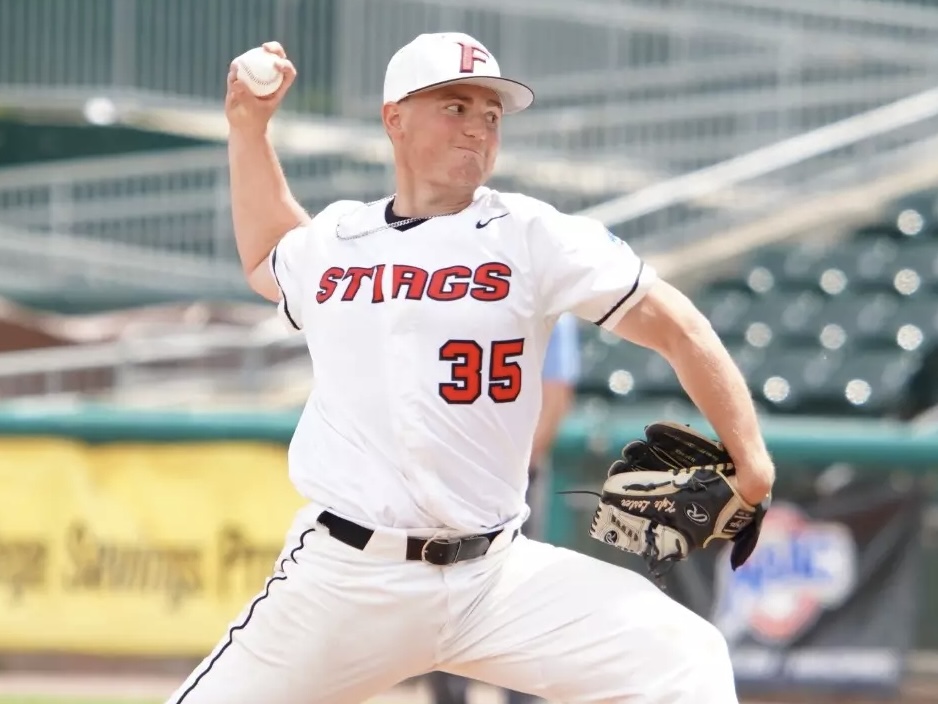
Fairfield University Baseball RHP Kyle Lesler joined us last summer in our Collegiate Summer Throwing Program. The 12-week program is 100% customized to the needs of the individual athlete, whether it be increasing velocity, improving command and control, improving pitch-arsenal, or simply getting better across the board. In general, Kyle was looking to add more velocity to his heater while improving his overall pitch ability. He started the program in early June and by departure in August, his top-end velo had improved from 88 mph to 91 mph, and he substantially improved his changeup and breaking balls to compliment his 4-seam.
How did he do it?
RPP’s 12-week summer program isn’t a very long period of time, therefore focusing on an athlete’s lowest hanging fruit is essential. All summer athletes begin the summer program with a comprehensive physical and mechanical evaluation:
-
- Physical Assessment – Covers a number of important topics, including (a) lower and upper half mobility (b) lower and upper half strength (c) lower and upper half power (d) speed – 30-yard dash, (e) lower and upper half elasticity – (f) decel metrics, (g) body fat % and lean mass ratios and finally a force-velocity evaluation profile.
- Mechanical Assessment – Represents a complete analysis and reporting of the athlete’s delivery and broken down into three specific areas kinematically. These include (a) arm and shoulder, (b) trunk movement and (c) the lower half.
- Pitch Arsenal – Represents a thorough analysis of the pitcher’s arsenal, pitch-movement profile for potential improvements in movement or an expansion of the overall repertoire.
By the time an athlete has completed our evaluation, we have an excellent idea of what his strengths are and which weaknesses we should pursue to optimize performance. There is NO better blueprint.
1. Physical Assessment
Body Composition
Below is a summary of Kyle’s height, weight, and body fat % in the beginning of the program.
-
- Height – 70”
- Weight – 209 lbs.
- Ratio – 2.99x (desired rage of 2.5 – 3.0)
- Body Fat – 27%
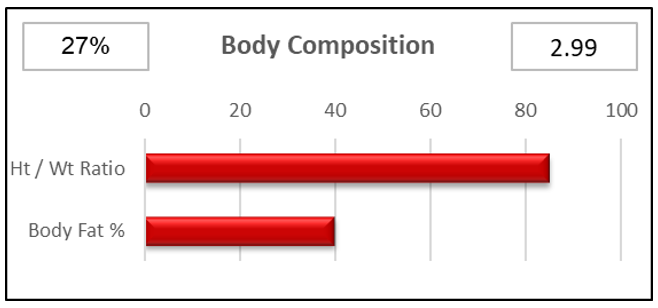
Over the course of the summer, Kyle was able to drop 15 lbs. of body fat, cutting his body fat percentage to 20% and weighing him in at 194 lbs., still keeping well within the desired range we look for.
Upper and Lower Half Mobility
The movement screening portion of the assessment is essential in identifying mobility and / or stability issues that may hinder the athlete’s ability to get into optimal positions throughout the delivery. In most cases, the issues that are presented in this portion of the assessment will be visible when we are evaluating the athlete’s mechanics in the video analysis portion of the assessment.
After completing Kyle’s table assessment, we concluded that Kyle’s mobility all in all was pretty good. The big issues that we needed to address were his tight hips and his limited T-spine mobility. Both absolute MUSTS for power on the mound.

Upper and Lower Body Strength
After completion of the movement screen, we then moved on to our strength and power testing to help give us more information about the type of athlete we were dealing with. Higher gains in these two categories help to create not only a higher velocity ceiling, but an overall more athletic body.
The following is the summary of Kyle’s estimated 1RM metrics in the weight room. Kyle is exceptionally strong bilaterally scoring in our 100th percentile. He also scored 80 and above on both his single leg squat and bench press tests putting him comfortably over what we consider our athletes to be “strong enough”. This showed us that strength was not the lowest hanging fruit in order to increase throwing velocity. Needless to say, Kyle presents well in the weight room.
-
- Trap Bar Deadlift – 470 lbs.
- Single Leg Squat – 105 lbs.
- Bench Press – 218 lbs.
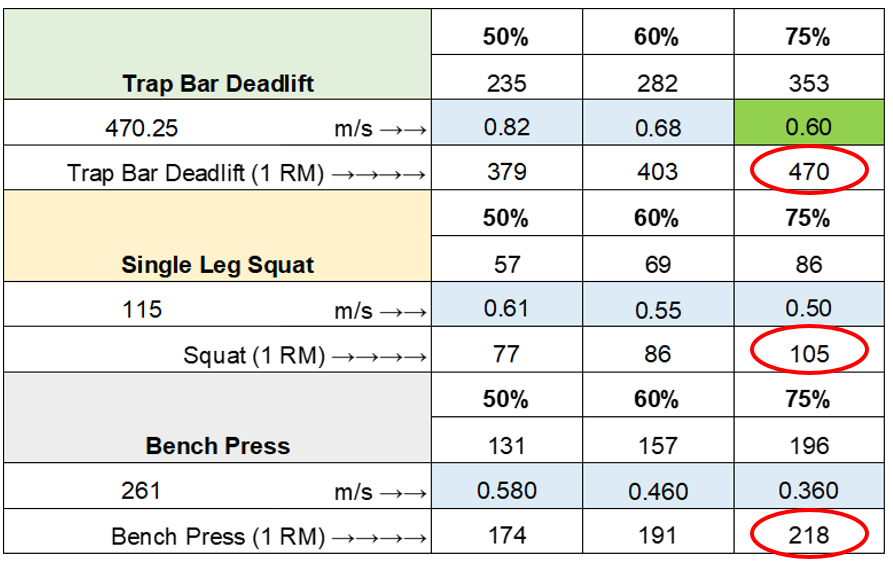
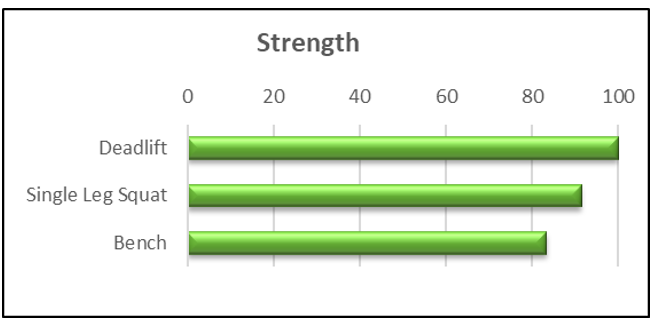
Lower Half Power
Power is all about how quickly we can produce Force. In baseball, you need to be both strong and powerful.
Power = Force X Velocity
Lower Half – With respect to power, we test both a Counter Movement Jump (CMJ) as well as a Squat jump help tell us which side of the power equation the athlete relies on to produce power. This also ultimately gives us an idea as to which side of the power curve the athlete lives on the Force-Velocity profile, allowing us to focus more on whichever is lacking, Force (Strength) or Velocity (elasticity).
Kyle’s lower half power testing demonstrated generally good lower half power, scoring near or above the 80-grade on both tests. Once we knew for certain Kyle was explosive bilaterally, we wanted to incorporate more unilateral plyometric work to help balance out any potential deficiencies.
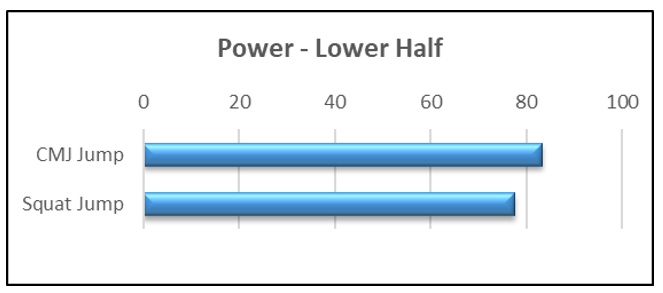
Lower Half Elasticity
Elasticity is the body’s ability to store and release energy from connective tissues, namely the tendons. Building more elastic / spring-ier athletes begins to transition the reliance away from muscular-driven movement and more towards a reliance on the power of the connective tissue. This allows the athlete to generate more force / power with less effort.
From a training standpoint, This involves primarily getting our athletes to better use their stretch-shortening cycle, in turn increasing what we call their “elastic” properties. Developing these qualities involves training with Extensive Plyometrics.
Kyle Lesler scored in the 100th percentile of our Lower Half Elasticity test. So now that we know he’s got it, we needed to work towards teaching Kyle how to access his potential energy while on the mound.
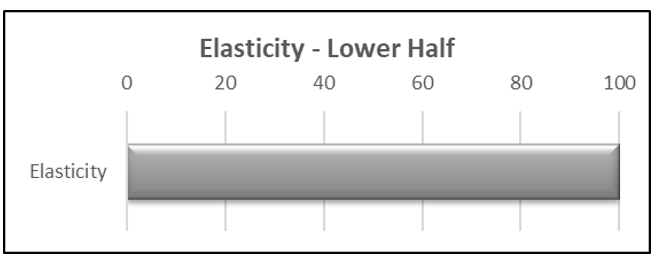
Decel
This test looks at the ability of the athlete’s lead leg to hit the brakes immediately at foot plant and in turn transfer force back up the kinetic chain to use during the throw, or in the case of the test, how quickly they can land on one leg and turn that force the other way with a jump. Jump height and contact time give us what is known as a “Reactive Strength Index” (RSI).
Kyle’s Front Leg RSI was 0.875, putting him at a Phase 2 plyometric ability which needed improvement. This gave us an idea that even with a great amount of strength and elasticity, Kyle still needed to learn how to stabilize quickly and go the other way to help prevent leaks with his lower half that could be present while transitioning from foot plant into and through release.

2. Pitching Mechanics
The pitching mechanics analysis involves analysis of dozens of possible disconnects in the delivery which are then summarized into a summary report. In Kyle’s case we also had the benefit of our in-house motion capture report. The following is a summary of the summary.
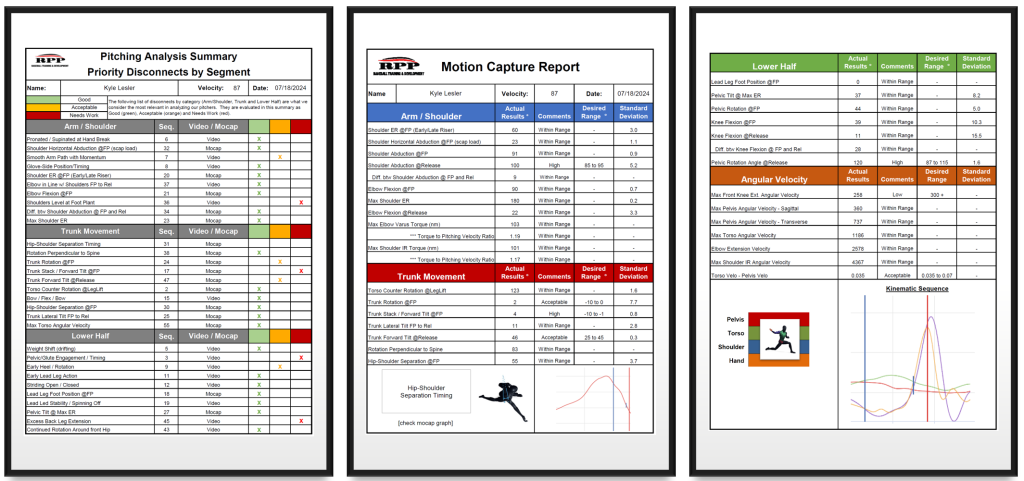
As pitching mechanics go, the majority of Kyle’s disconnects in the Arm / Shoulder. There were four disconnects which we prioritized to address. Below is a summary and description of each:
Arm / Shoulder
-
- Shoulders Level @ FP – Getting the shoulders level or slightly downward even helps the athlete to get down and “on top” of the ball. It can negatively affect creating later arm speed and staying on the ball longer to create better leverage and later arm speed.
Trunk Movement
-
- Trunk Stack / Forward Tilt @FP – This is the ability to keep the pelvis and upper body “stacked” from the beginning of the linear move all the way into FP. Failure to do so will make it difficult to achieve efficient rotation and forward trunk flexion to occur later in the delivery.
Lower Half
-
- Pelvic / Glute Engagement / Timing – This is defined by proper weight distribution on the back leg/foot and slightly hinging at the hips. This is key for maintaining posture into FP and avoiding a “push” or “vaulting” off the rubber. The longer we can keep the rear glute engaged the later we can create lateral force and sequence energy up the chain later in the delivery.
- Excess Back Leg Extension – When there is poor sequencing, we generally see everything rotating together and the back foot coming off the ground prior to release. This is usually a result of poor hip/shoulder separation/timing and not stretching the sling.
Addressing mechanical disconnects is often addressed by work both in the weight room and specific drill sets we assign the athlete to be performed on a daily basis.
We provided Kyle with throwing correctives that would look to correct his mechanical deficiencies found in his analysis. In addition to his mobility correctives, the following were assigned:
-
- Walking Torques – Used to help with linear component to all upper body mechanics and front foot position @ FP.
-
- Step Back Drill – Used to maintain back heel connections and back leg tension. Helps influence staying connected with the ground longer, in turn producing more force to send up the chain during the throw.
-
- Step Behind with Leg Lift – Used to drive a linear move down the mound. Helps hold tension in back leg while keeping similar feels with the arm as the prior two drills.
-
- Reverse Walking Wind-up – Used to promote back heel connection and effectively rotating into and through the front hip
3. Pitching Arsenal
Kyle came in-house this summer with a good 4-Seam FB, a below average changeup and curveball. Based on all the information we had on hand with both the mobility screening and mechanical analysis, we had a great understanding of how we were going to help shape Kyle’s arsenal.
He has a 4-seamer that averages 18IVB in the low 90’s, tweaking his changeup grip we were able to create a pitch that he could throw in the low 80’s with sub 7IVB and 18-20HB. We turned his CB into a Sweeper that he threw -16-20HB and finally added a new pitch that has been generating a ton of whiffs for Kyle, a low-mid 80’s cutter.
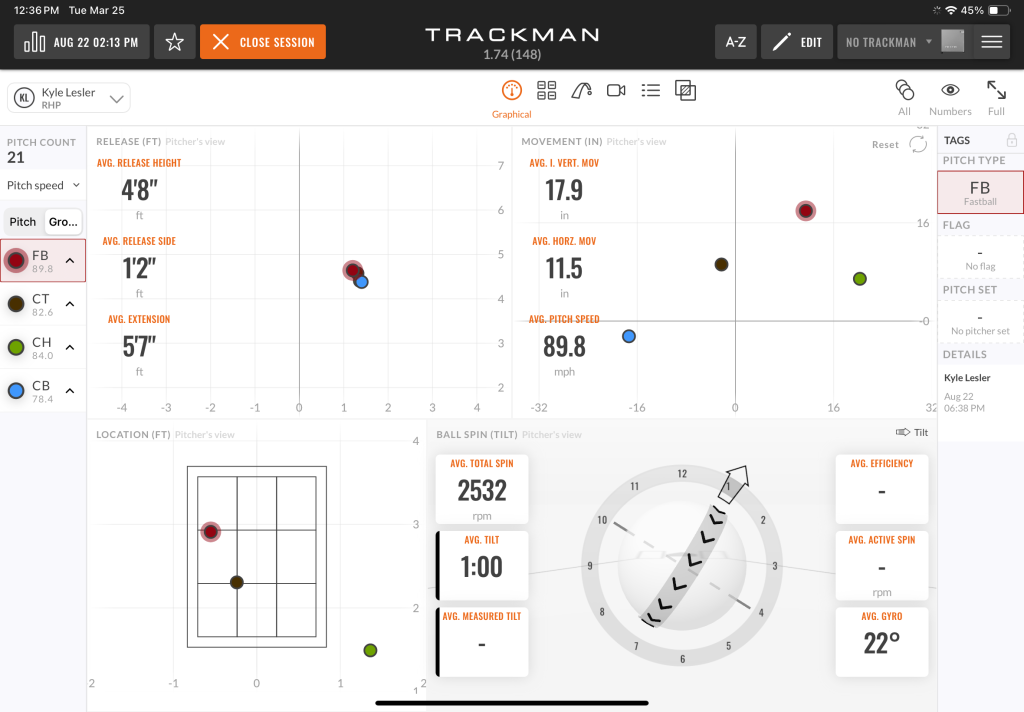
This spring, through 25 innings this season, Kyle is 3-0 with a 2.16 ERA. In 3 of his last 4 starts, he has gone 5+ innings allowing 1 run or less.
Keep up the great work Kyle!
The Summer Throwing Program
The 12-week Summer Throwing Program is specifically designed for graduating seniors and college-level pitchers whose main priority is to improve their velocity and overall command. There is a great deal that goes into a improving your craft and it’s important that a comprehensive program incorporate all aspects of the process. The program can be performed:
-
- At RPP (in-house)
- 100% Remote
- Hybrid
The objectives of the summer throwing program are as follows:
-
- Increase velocity ceiling
- Improve overall command
- Improve pitch movement through pitch design work
- Build endurance and resilience in your arm
- Improve overall physicality and become more athletic
Article by Niko Leontarakis, Nunzio Signore and Bahram Shirazi

